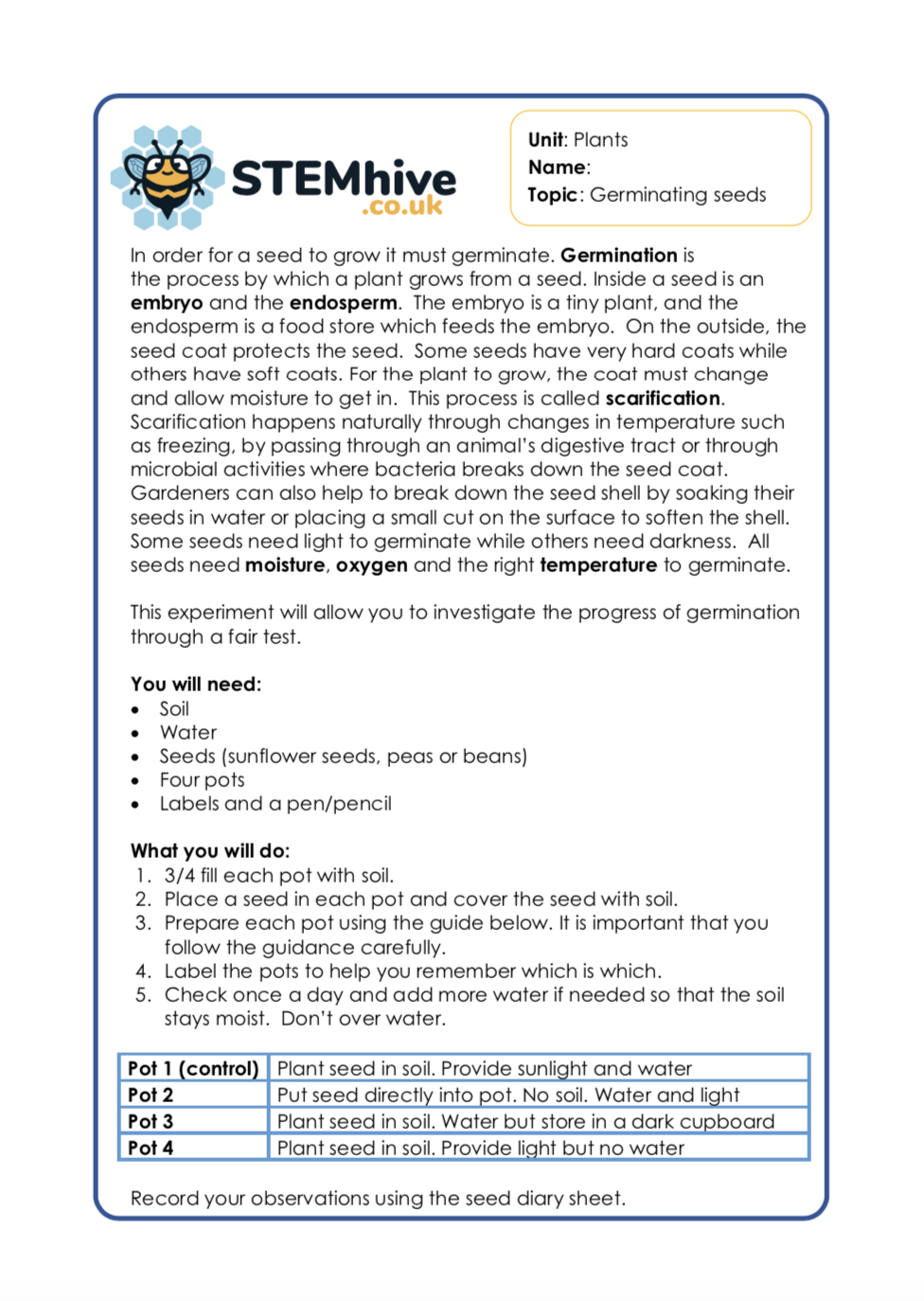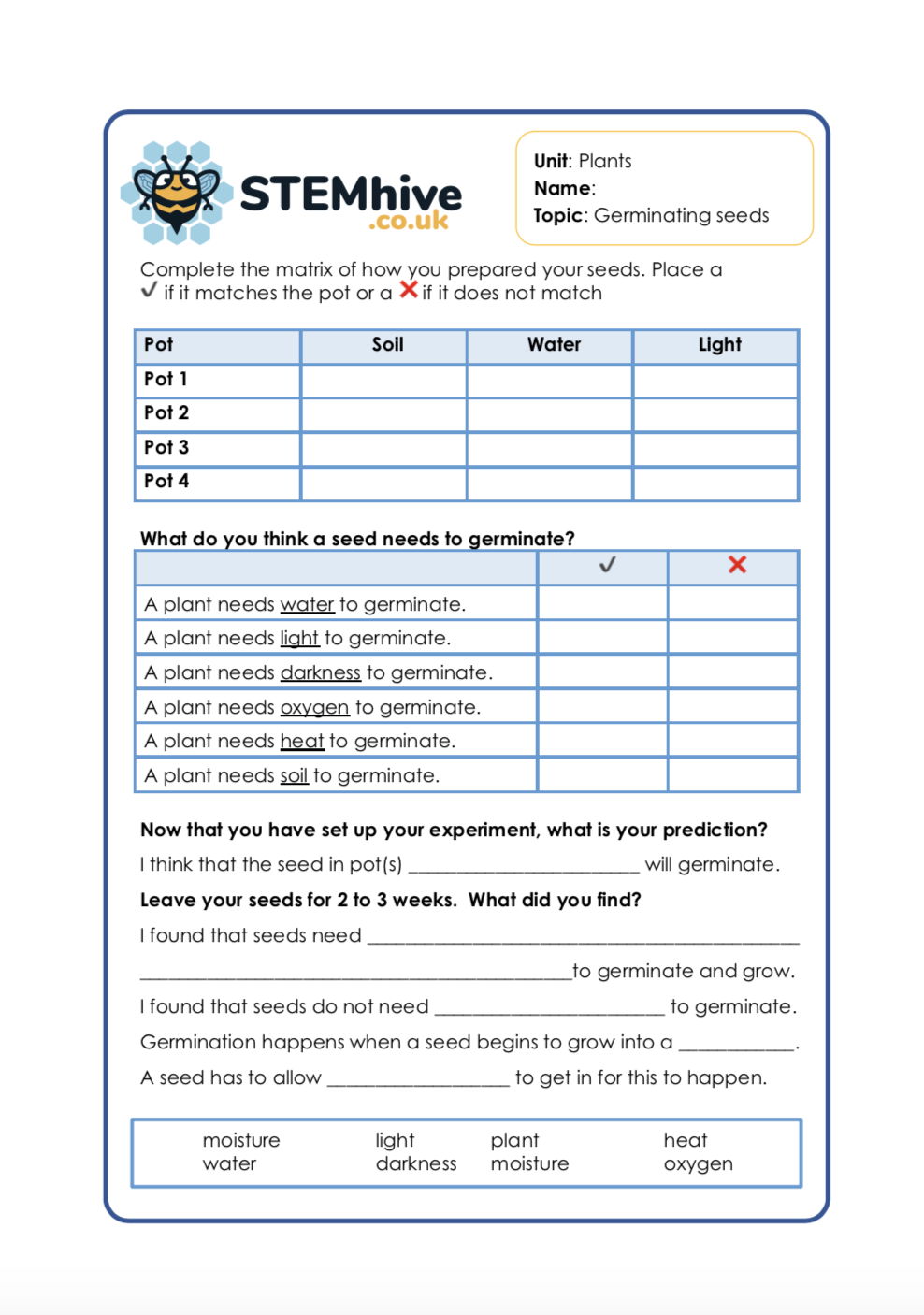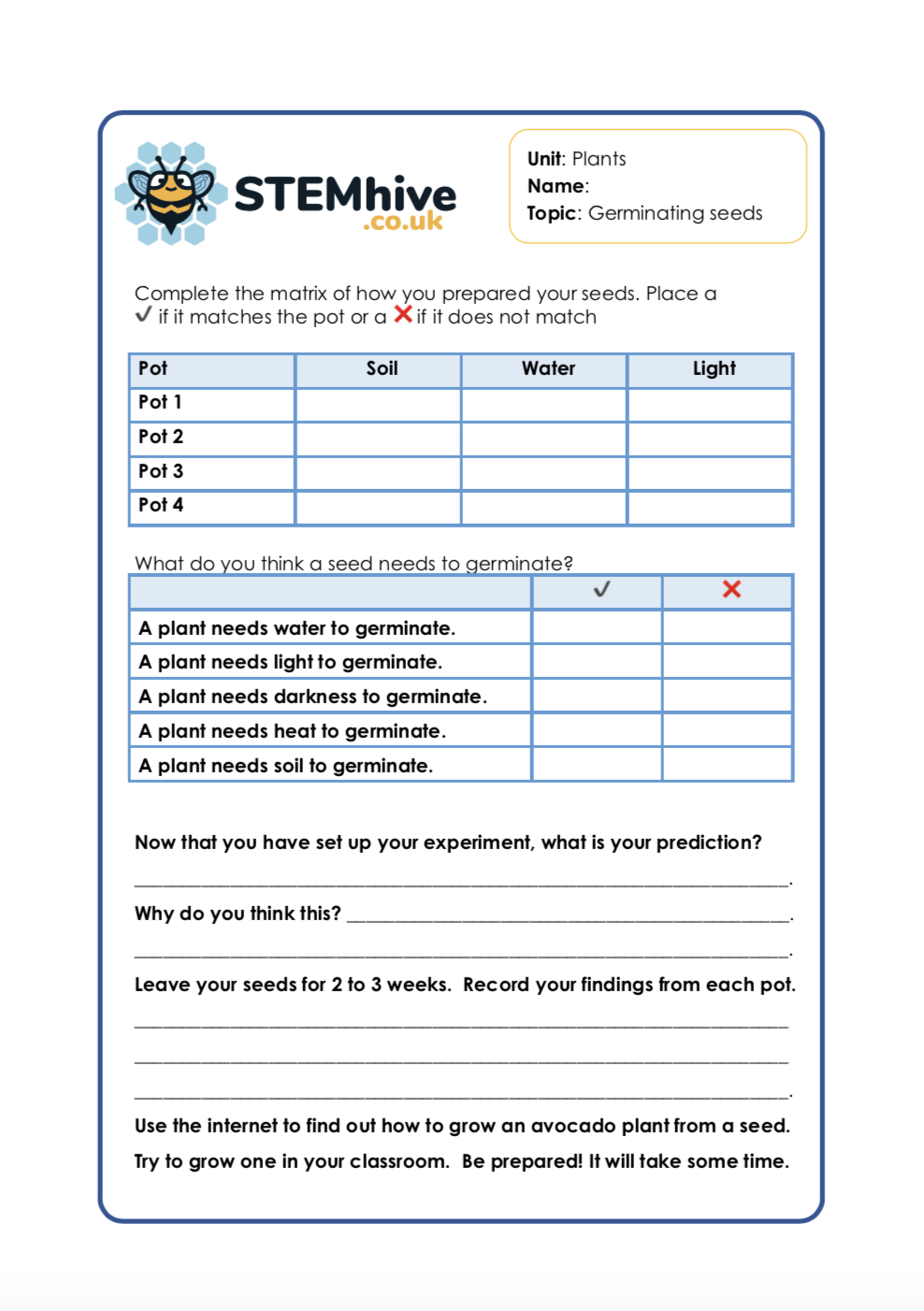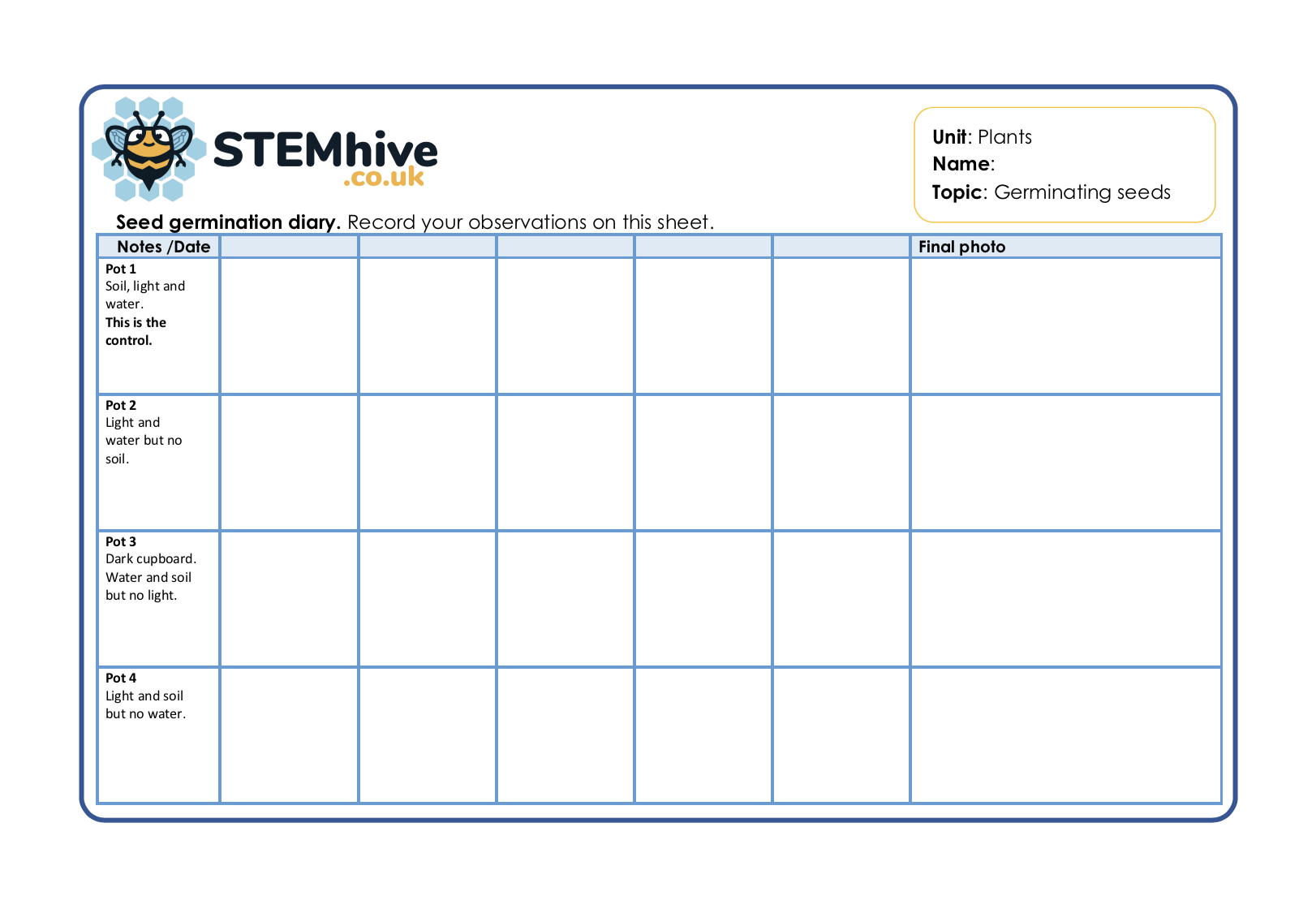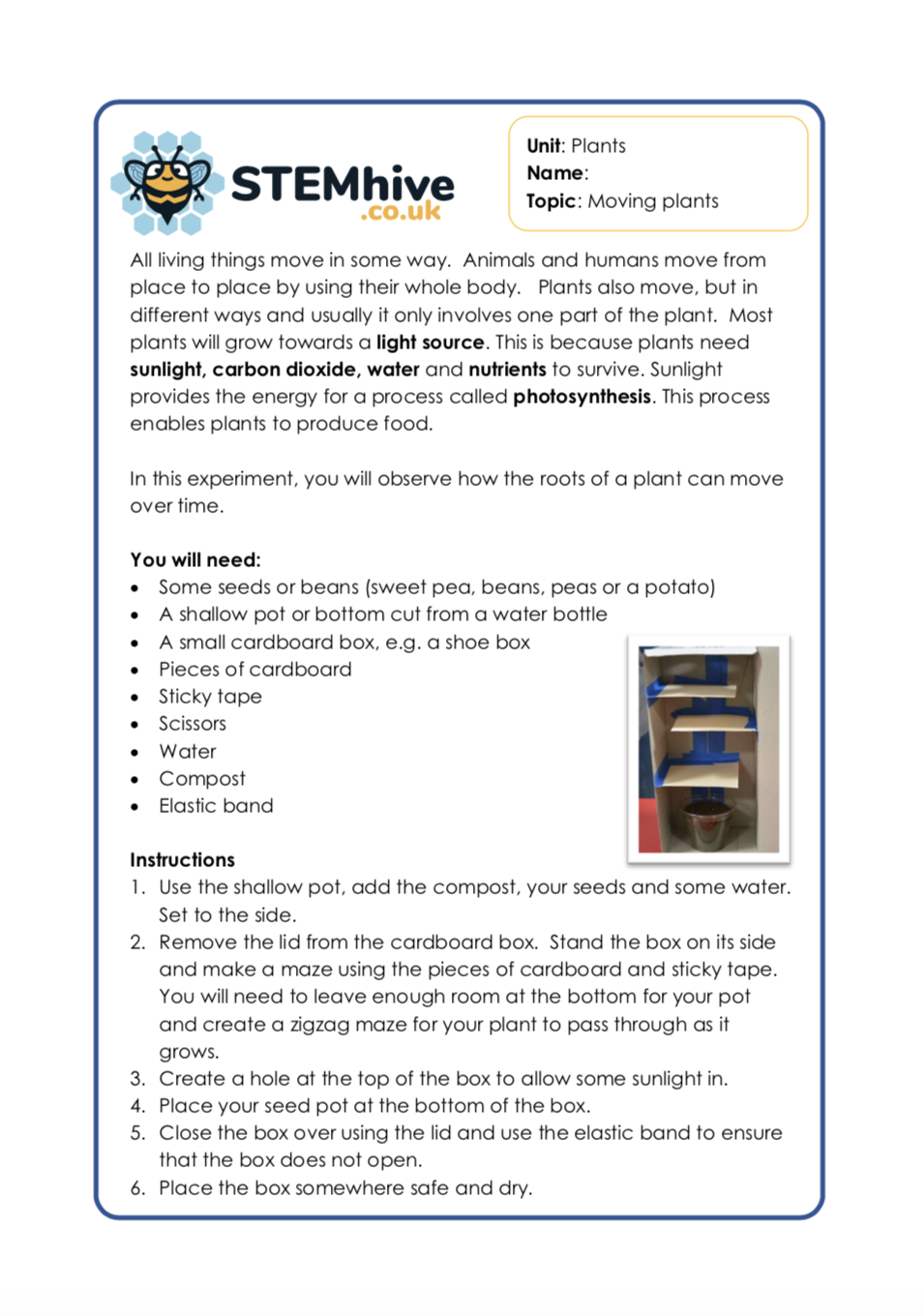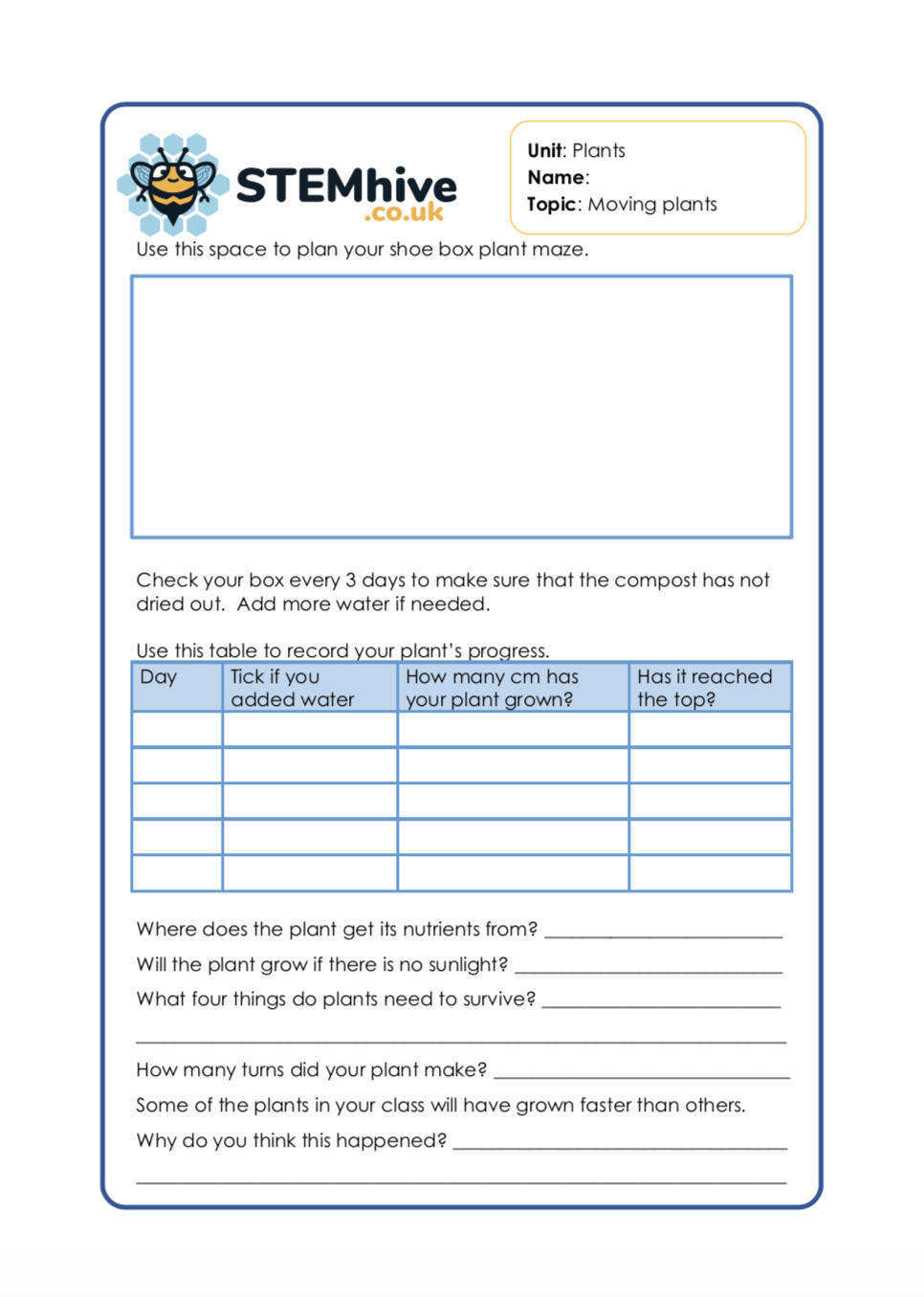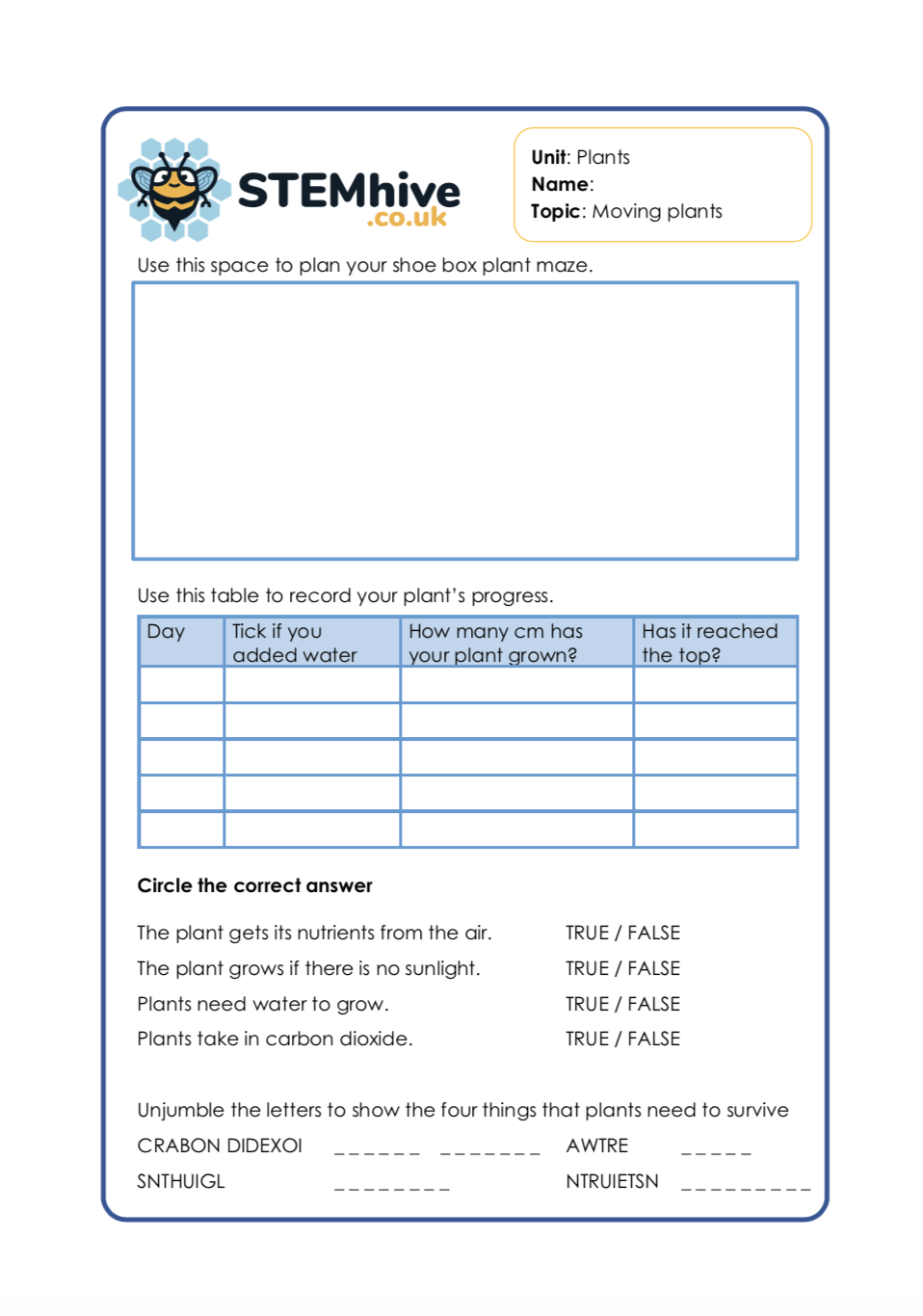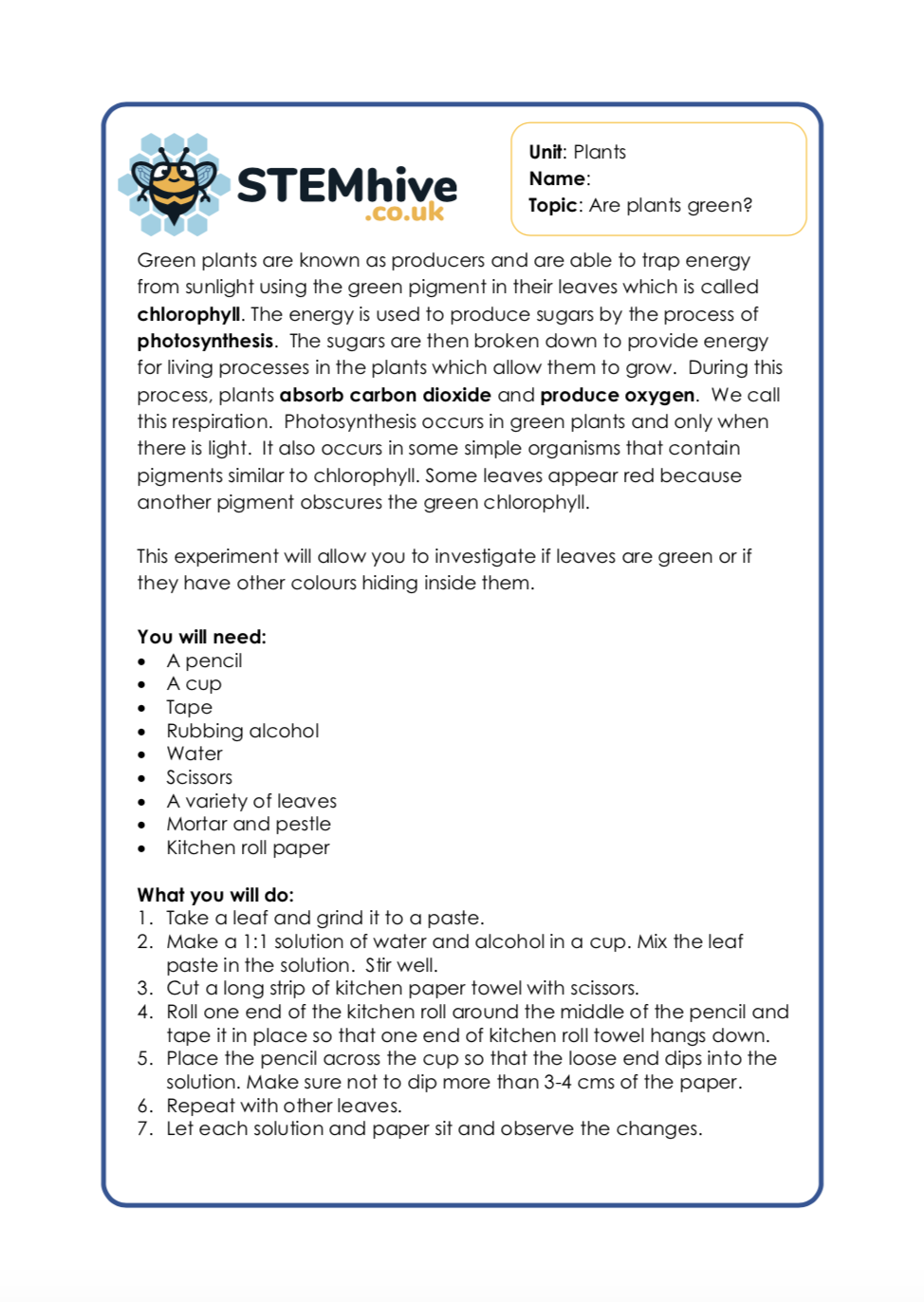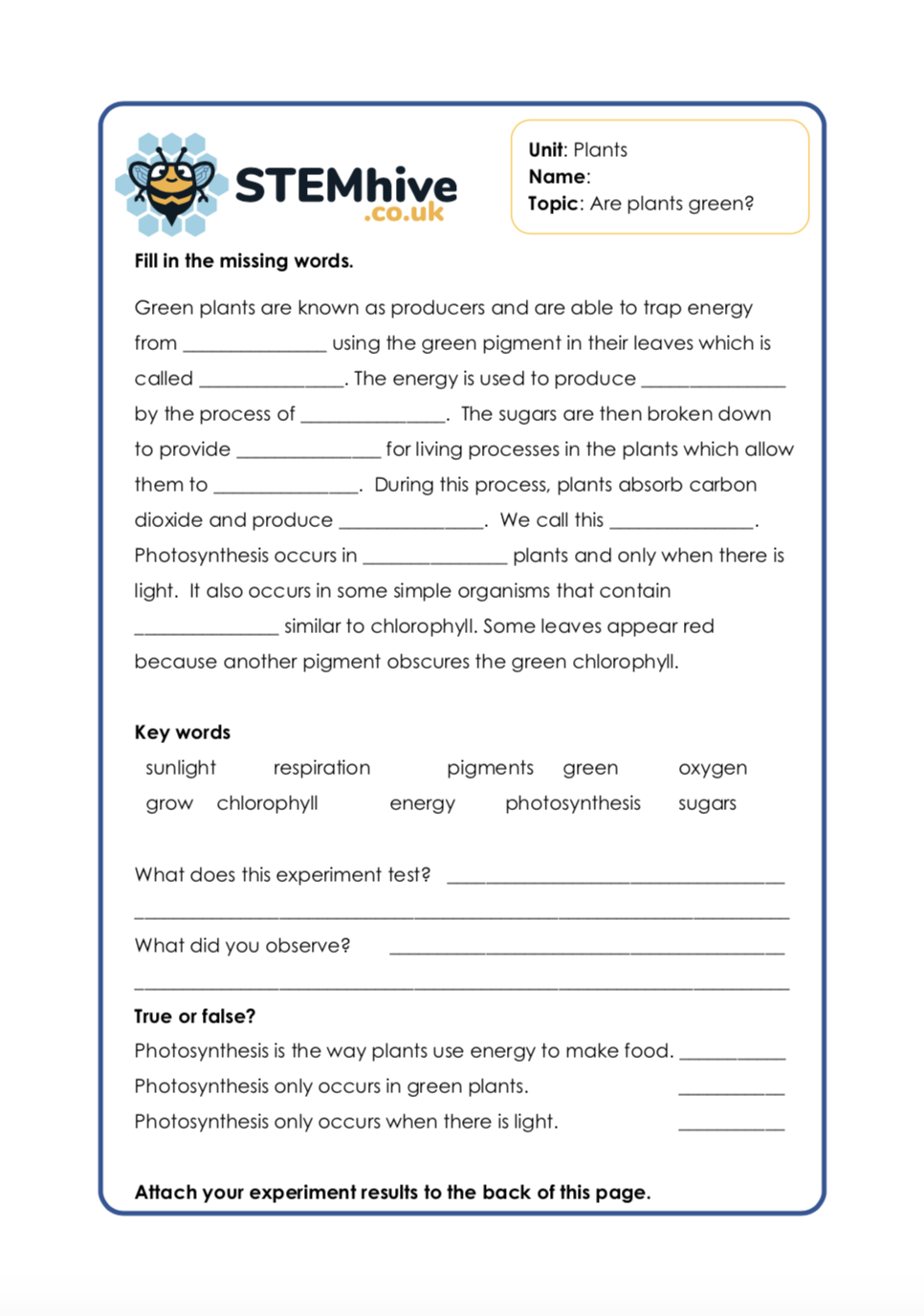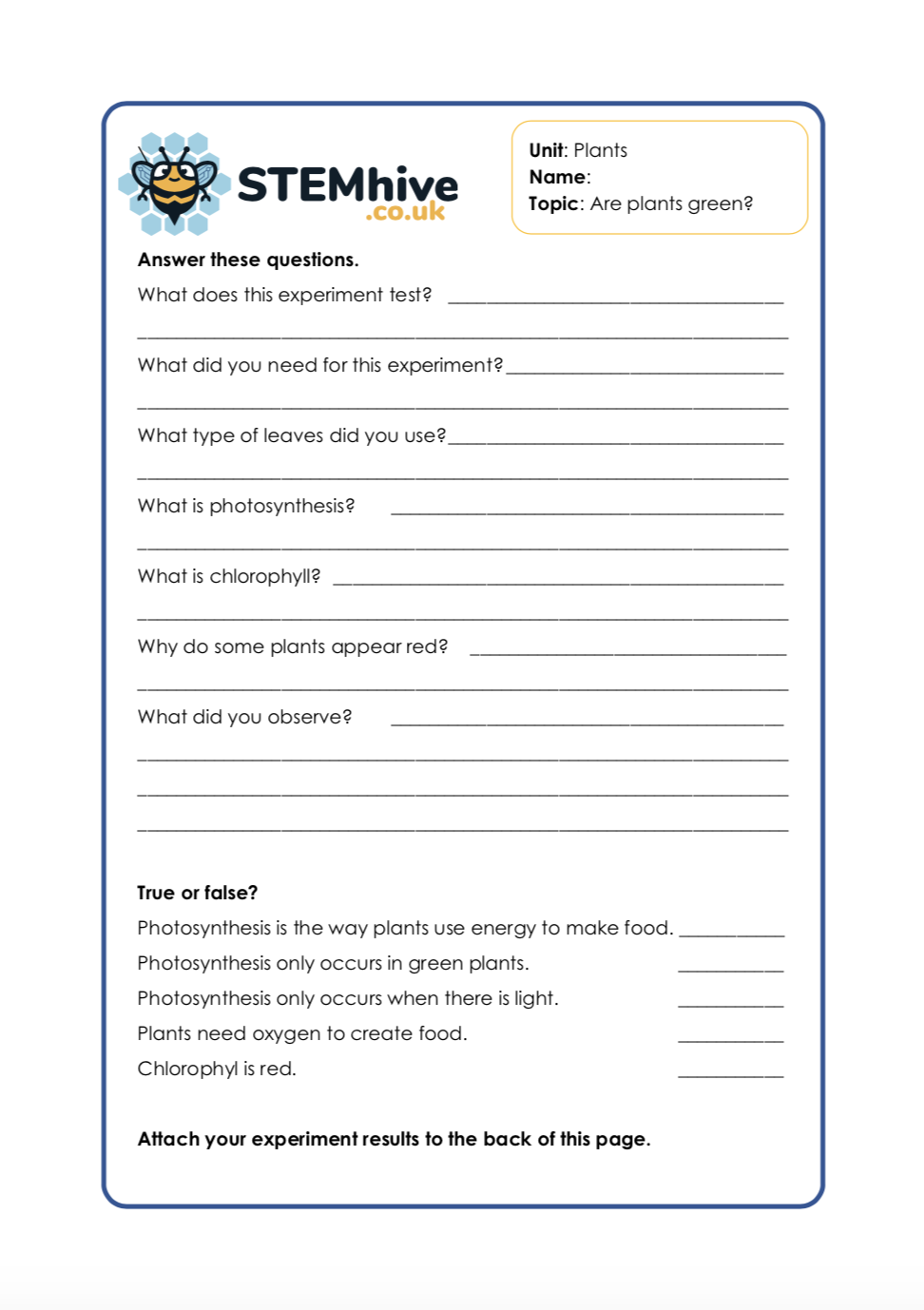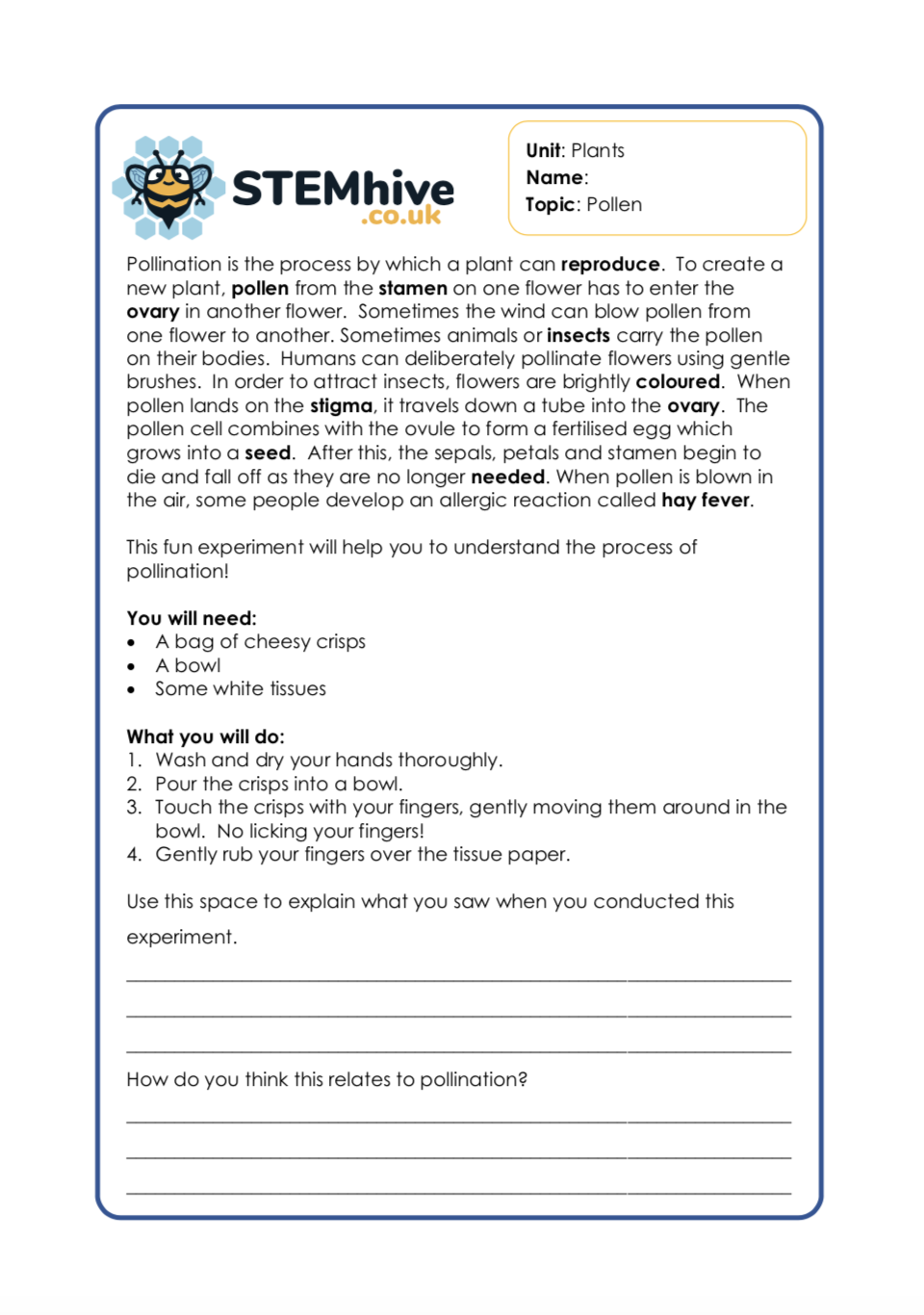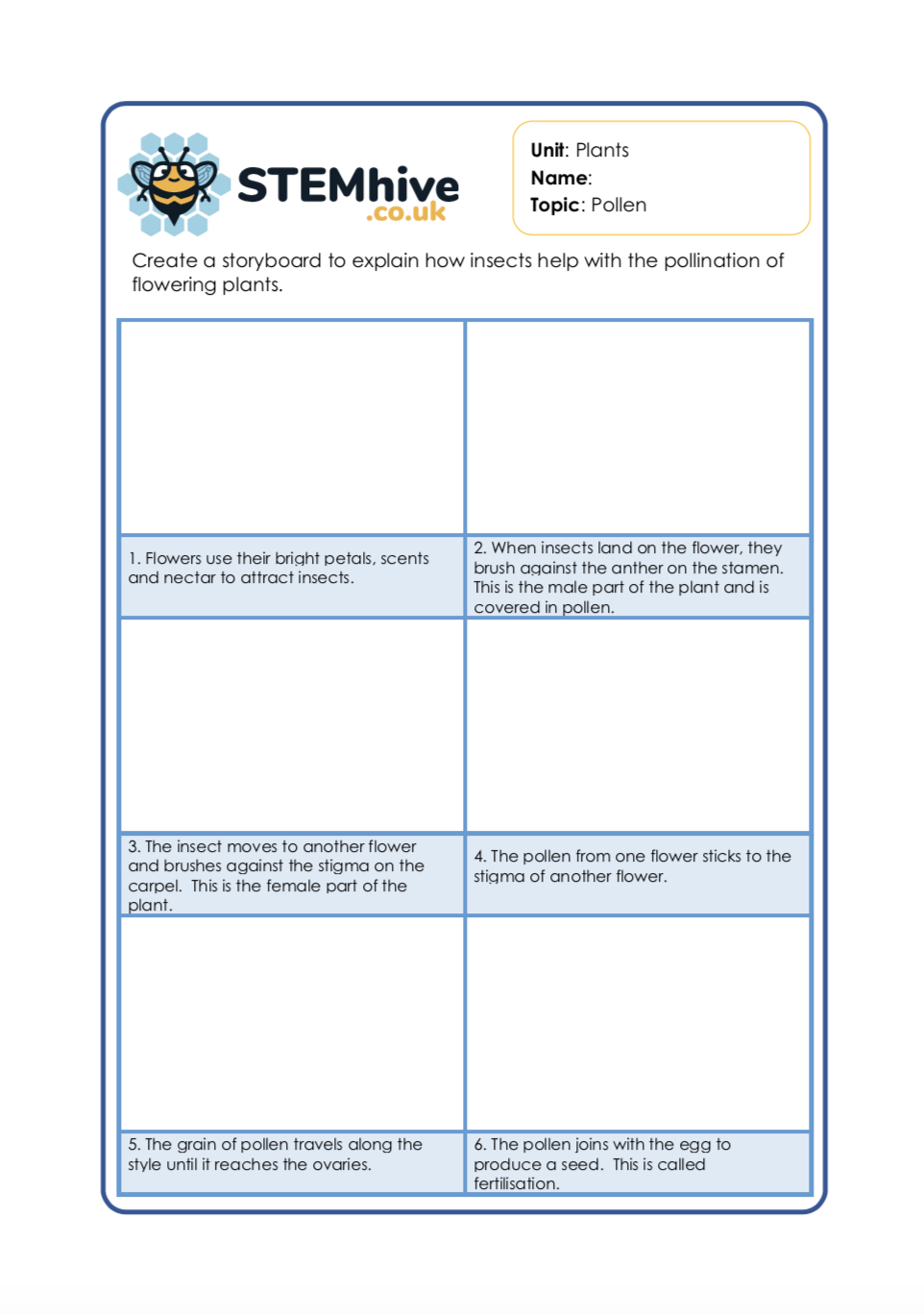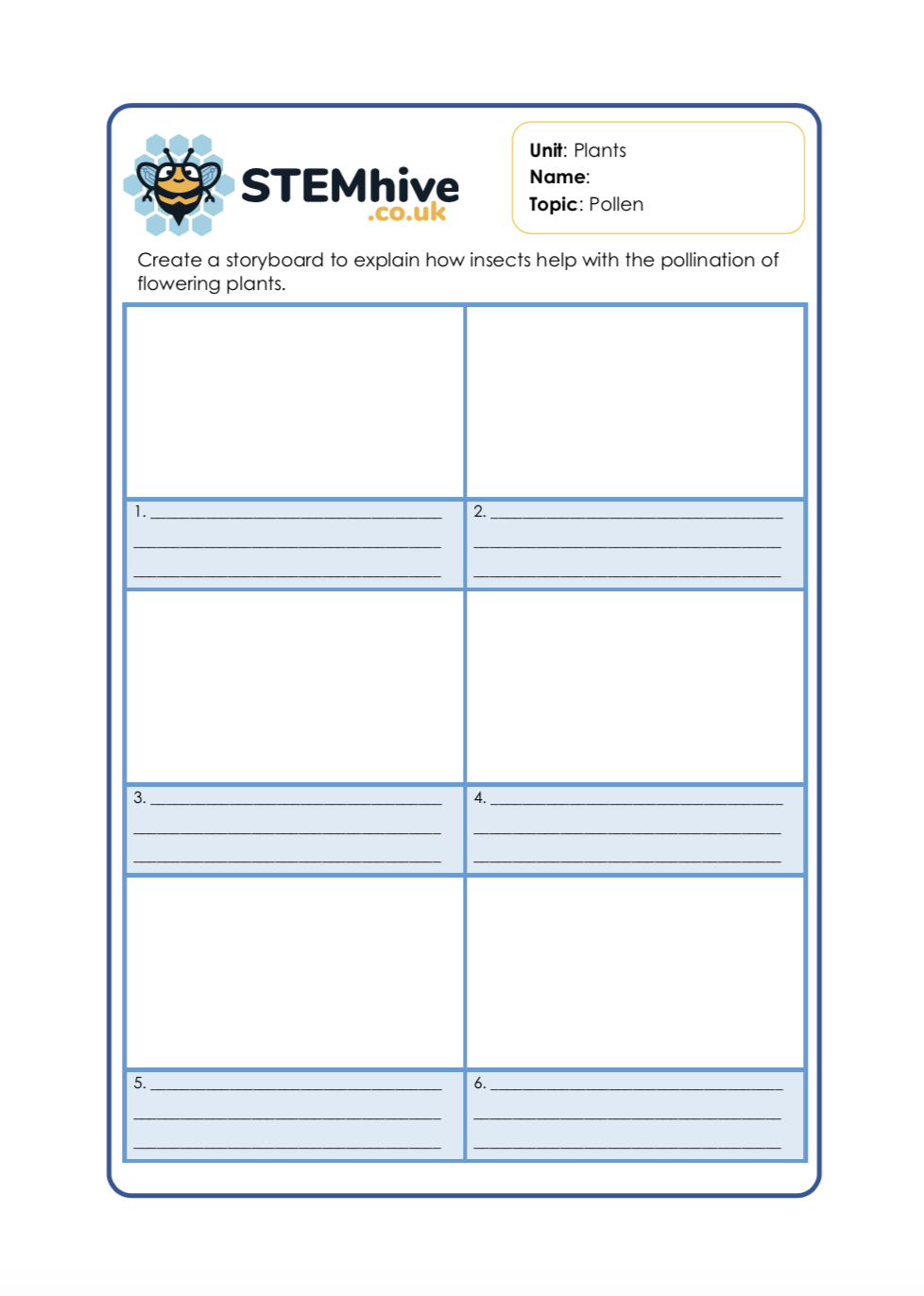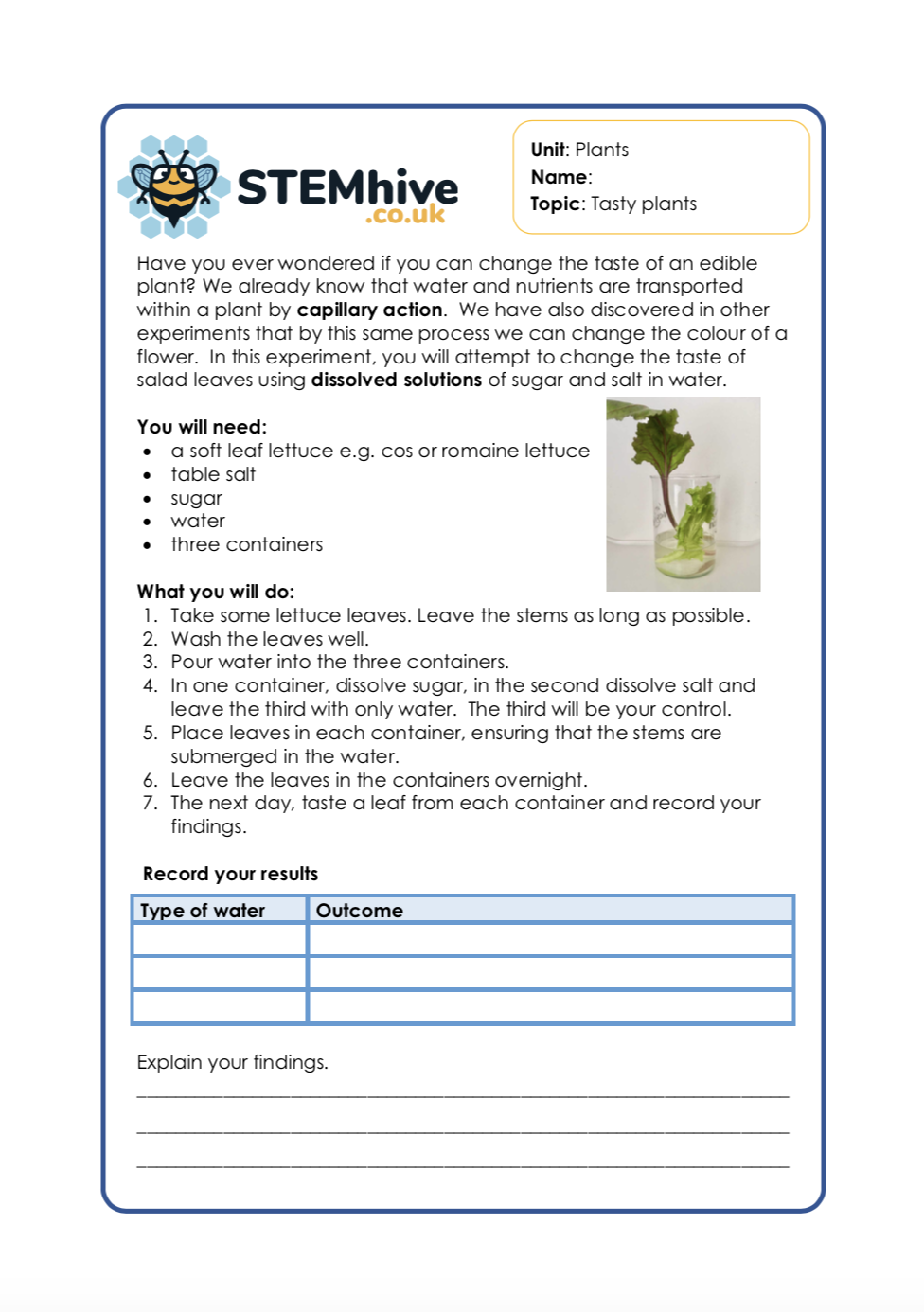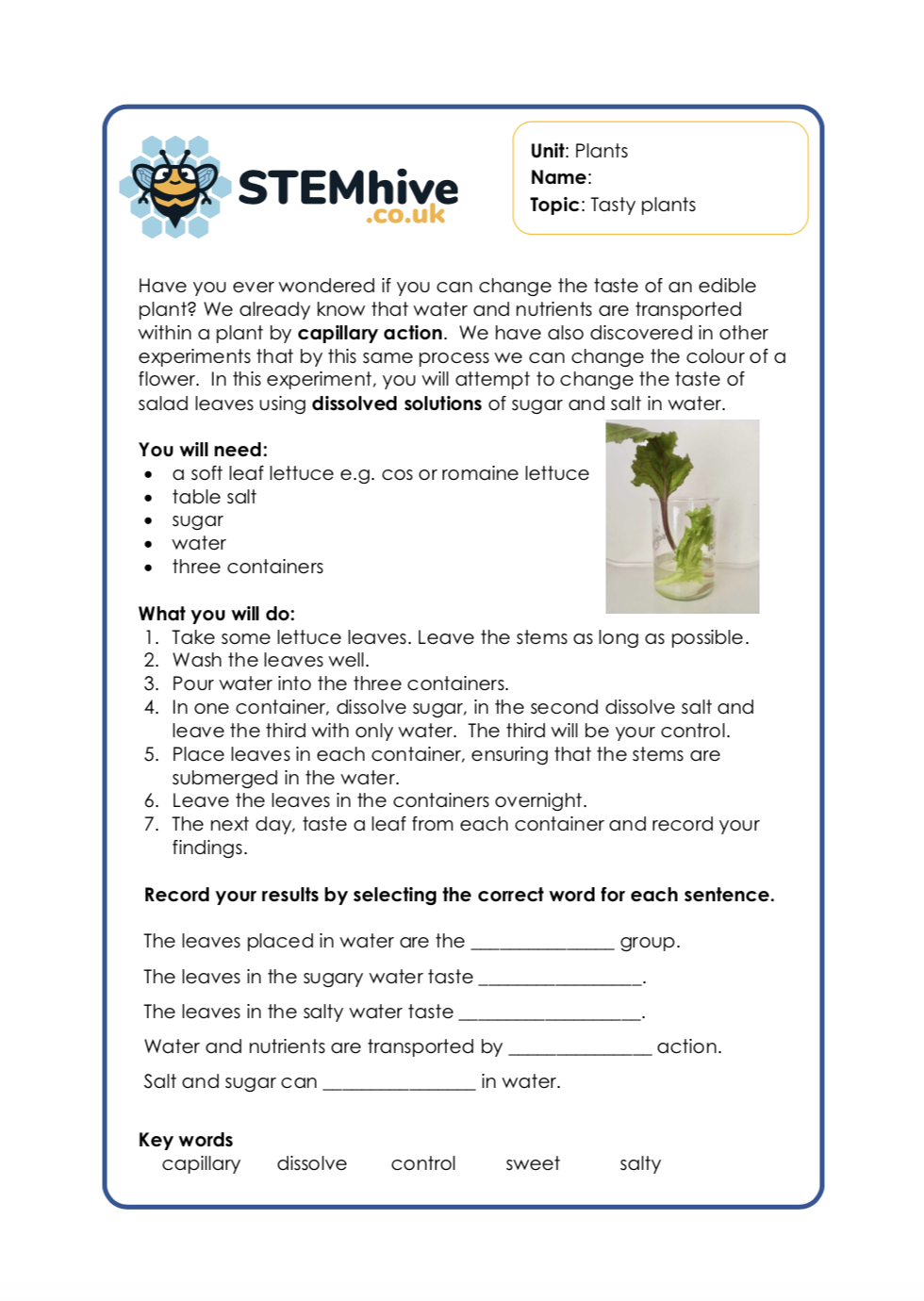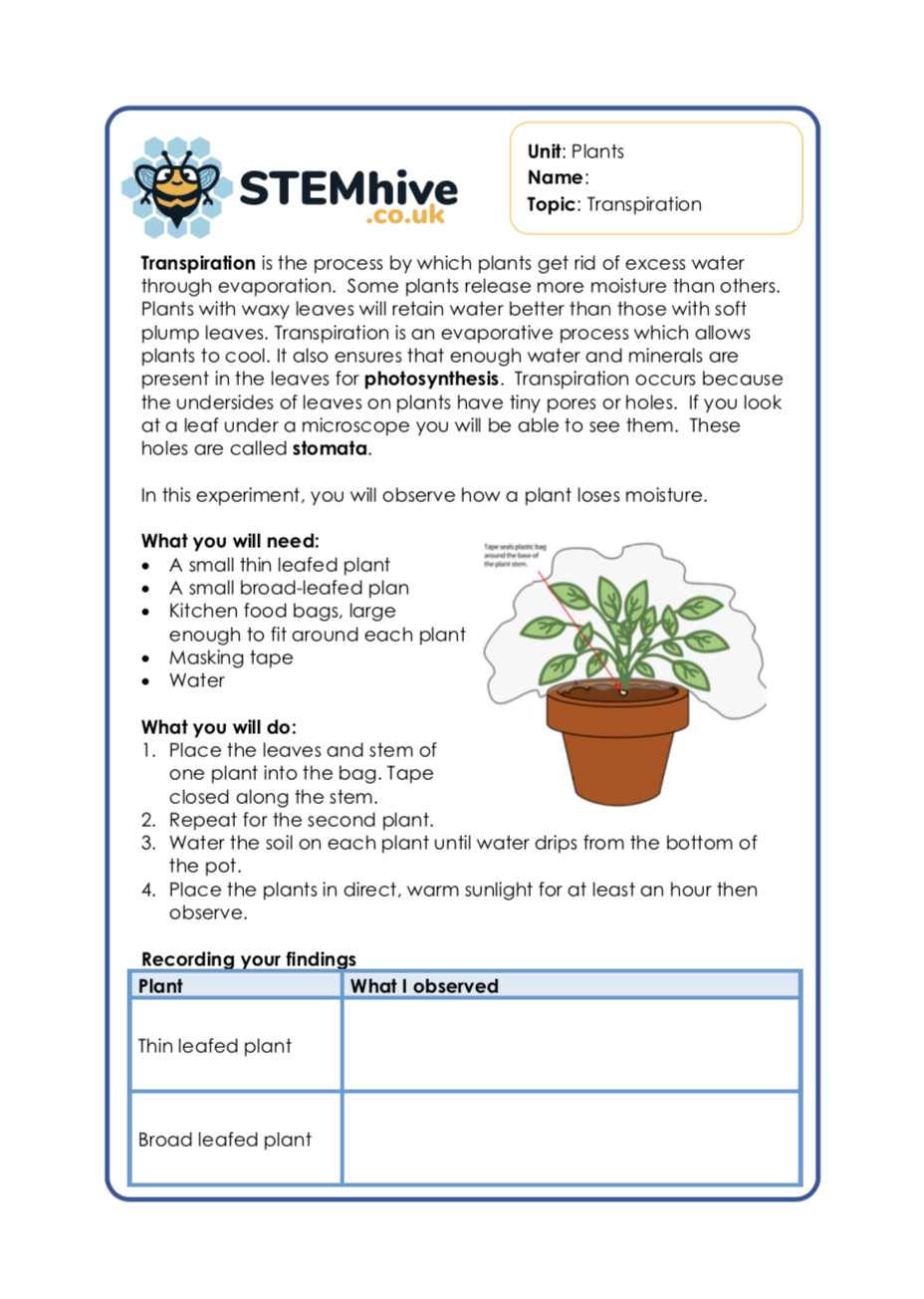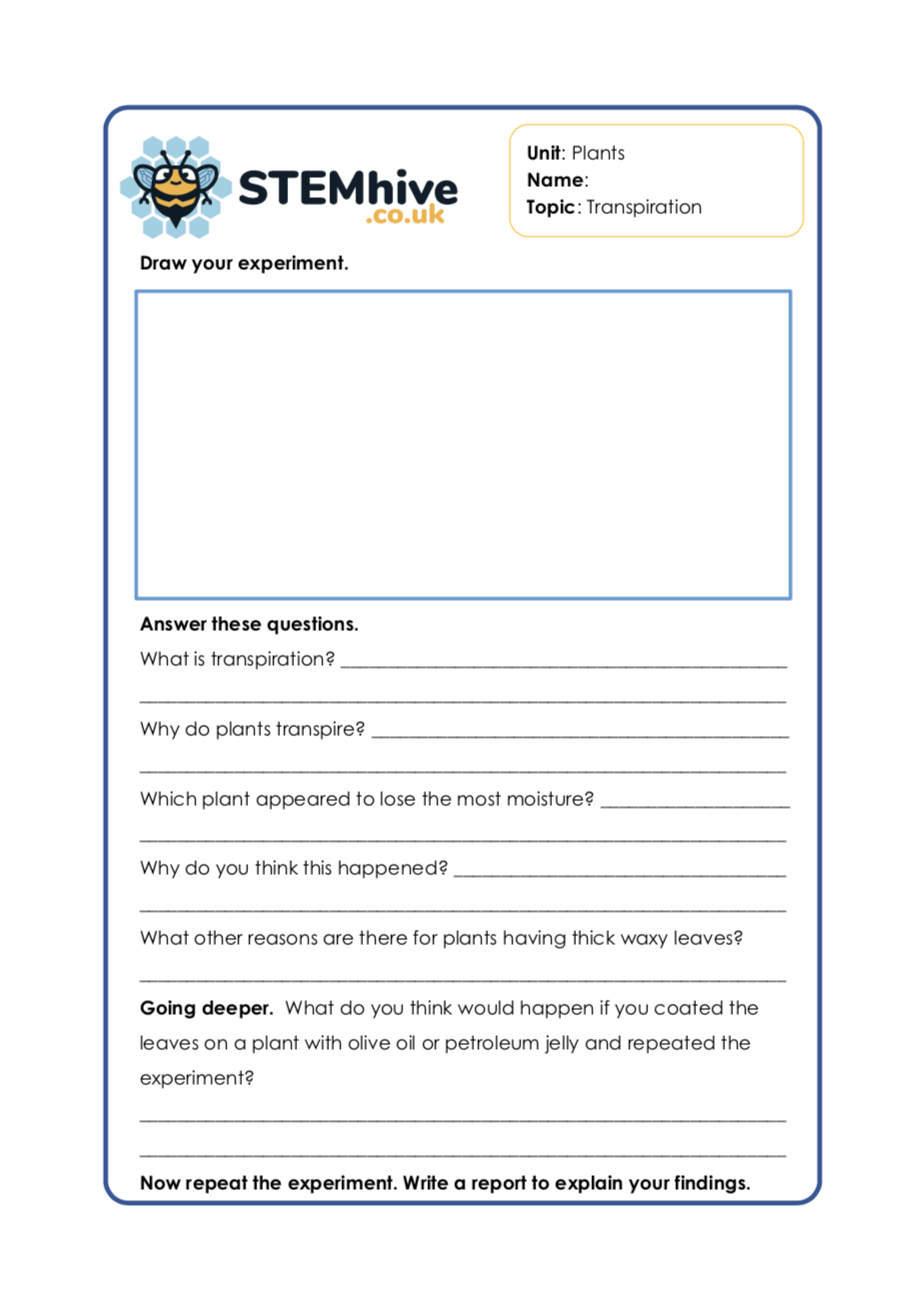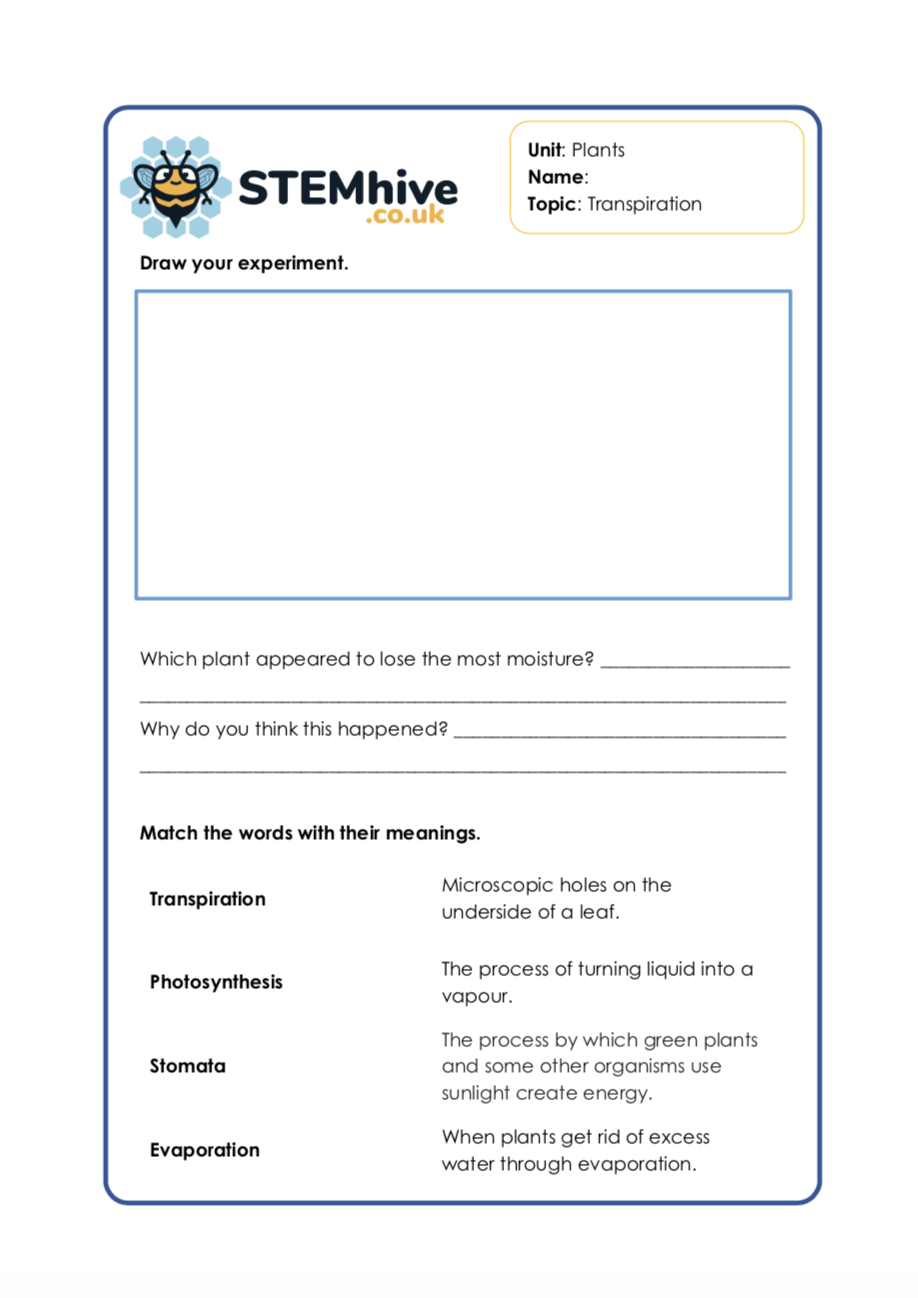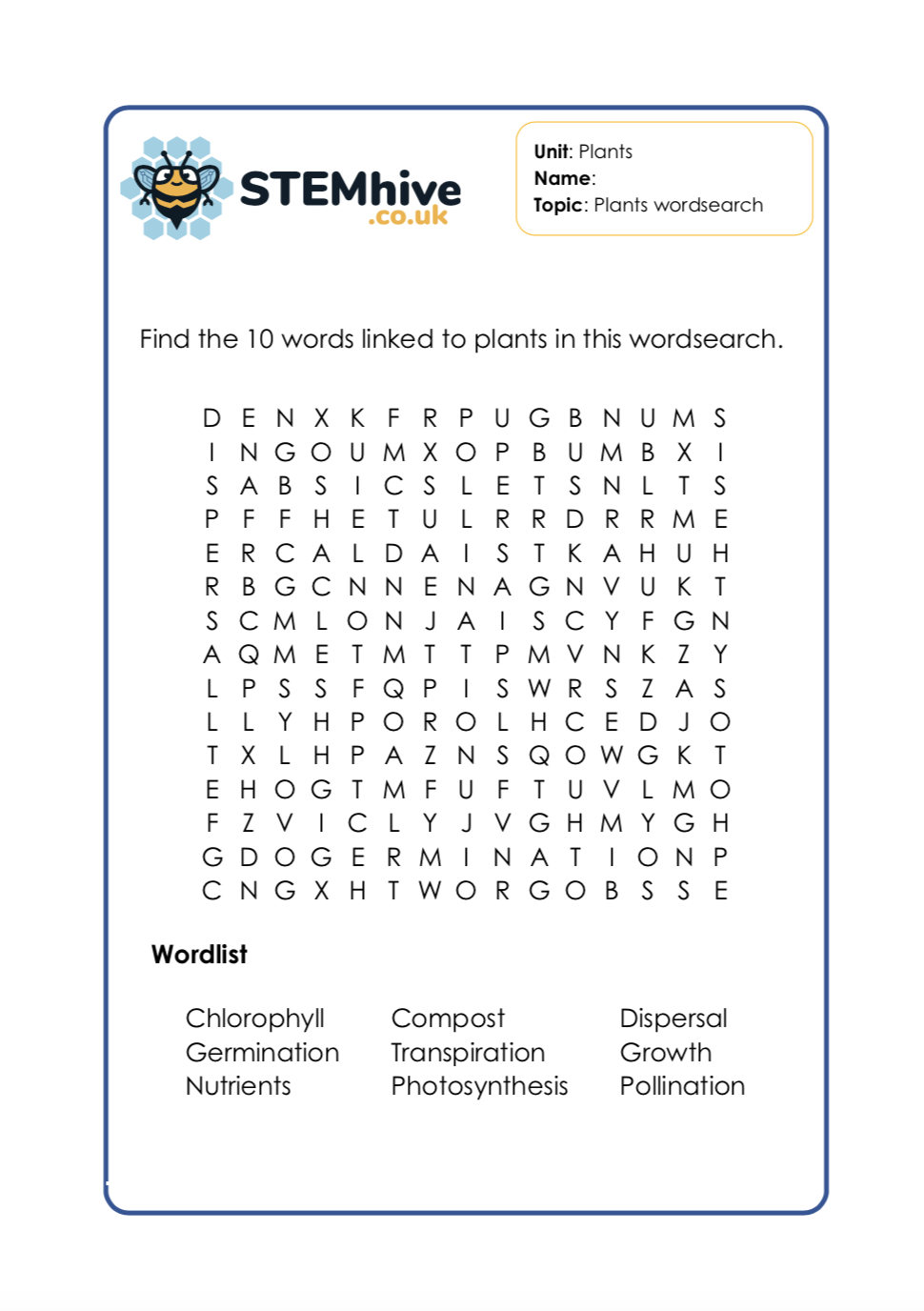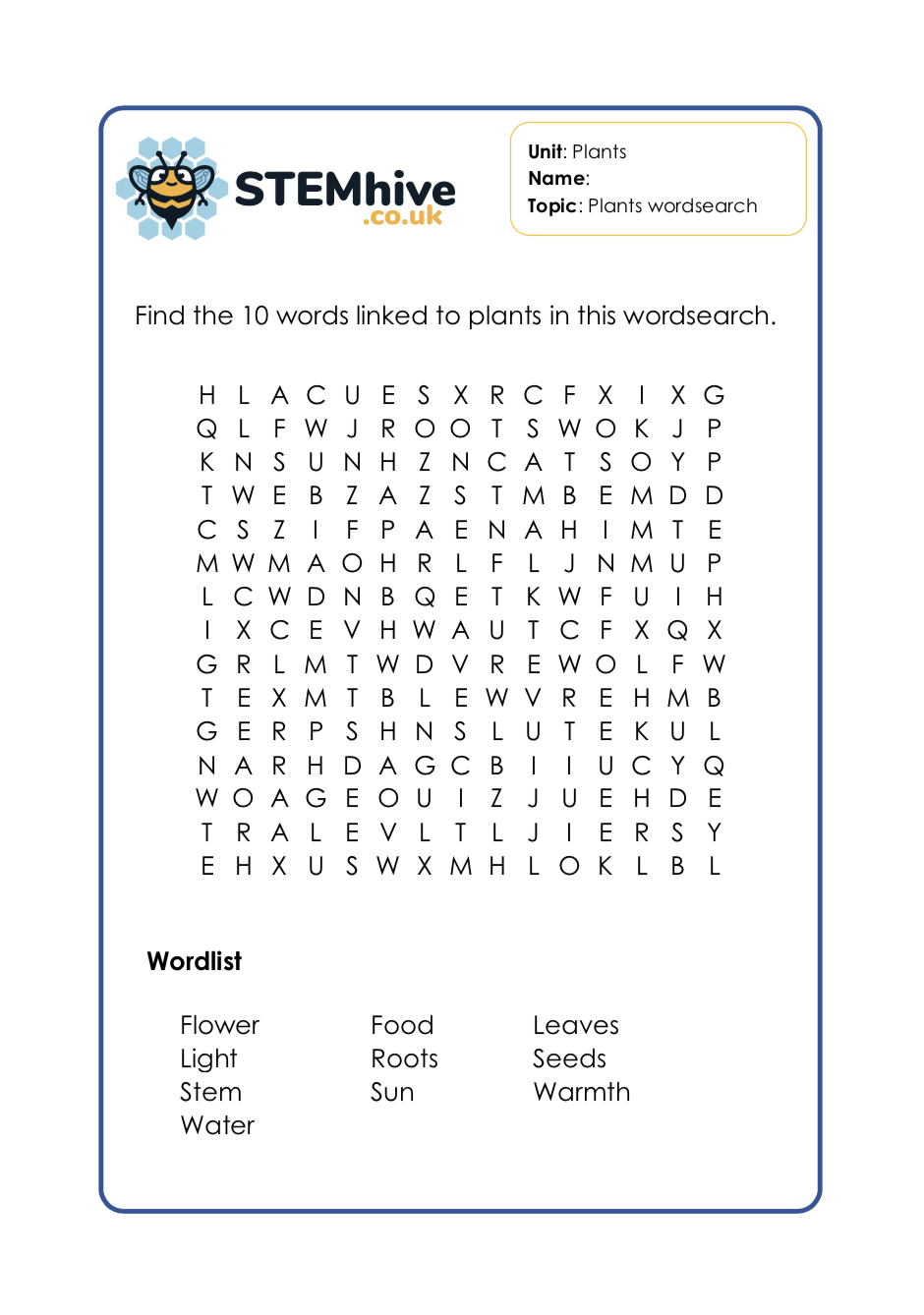Plants
Main Focus: Germinating Seeds
This is a resource that explains the process of germination when learning about germination in for children aged 9-11.The science experiment will allow your KS2 class to investigate the progress of germination through a fair test, make observations and record their results.
Main Focus: Germination Record Sheet
This is a record sheet to show the findings of the germination experiment.
Unlock ResourceMain Focus: Moving Plants
In this experiment, your Year 5 / Year 6 class will observe how the roots of a plant can move over time. In this resource, your class will learn the science, answer questions, complete an experiment and learn new vocabulary.
All living things move in some way. Animals and humans move from place to place by using their whole body. Plants also move, but in different ways and usually it only involves one part of the plant. Most plants will grow towards a light source. This is because plants need sunlight, carbon dioxide, water and nutrients to survive. Sunlight provides the energy for a process called photosynthesis. This process enables plants to produce food.
Main Focus: Are plants green?
This is a brilliant STEM resource that explores the question… are plants green?
Your class will be explored to key scientific information and associated vocabulary in this topic.
Your class will explore photosynthesis, chlorophyll, sugars, pigments, carbon dioxide, oxygen and more to deepen their understanding of plants.
Unlock ResourceMain Focus: Pollen
This resource is linked to pollen and pollination. Your class will learn the science behind pollination and then create a storyboard to explain how insects help with the pollination of flowering plants.
Pollination is the process by which a plant can reproduce. To create a new plant, pollen from the stamen on one flower has to enter the ovary in another flower. Sometimes the wind can blow pollen from one flower to another. Sometimes animals or insects carry the pollen on their bodies.
Main Focus: Tasty Plants
Have you ever wondered if you can change the taste of an edible plant? We already know that water and nutrients are transported within a plant by capillary action. We have also discovered in other experiments that by this same process we can change the colour of a flower. In this experiment, you will attempt to change the taste of salad leaves using dissolved solutions of sugar and salt in water.
You will need:
- a soft leaf lettuce e.g. cos or romaine lettuce
- table salt
- sugar
- water
- three containers
Main Focus: Transpiration
What is transpiration?
Transpiration is the process by which plants get rid of excess water through evaporation. Some plants release more moisture than others. Plants with waxy leaves will retain water better than those with soft plump leaves. Transpiration is an evaporative process which allows plants to cool. It also ensures that enough water and minerals are present in the leaves for photosynthesis. Transpiration occurs because the undersides of leaves on plants have tiny pores or holes. If you look at a leaf under a microscope you will be able to see them. These holes are called stomata.
In this science experiment, your KS2 class will observe how a plant loses moisture.
What you will need:
- A small thin leafed plant
- A small broad-leafed plan
- Kitchen food bags, large enough to fit around each plant
- Masking tape
- Water
We have created these printable resources to take your class step by step through this STEM experiment and to develop their knowledge on plants and the process of transpiration.
Unlock ResourceMain Focus: Word Search - Key Vocabulary
This is a word search that covers many of main vocabulary and terminology associated with a STEM topic on plants.
Chlorophyll, Germination, Nutrients, Transpiration, Compost, Germination Photosynthesis
Dispersal Growth Pollination

